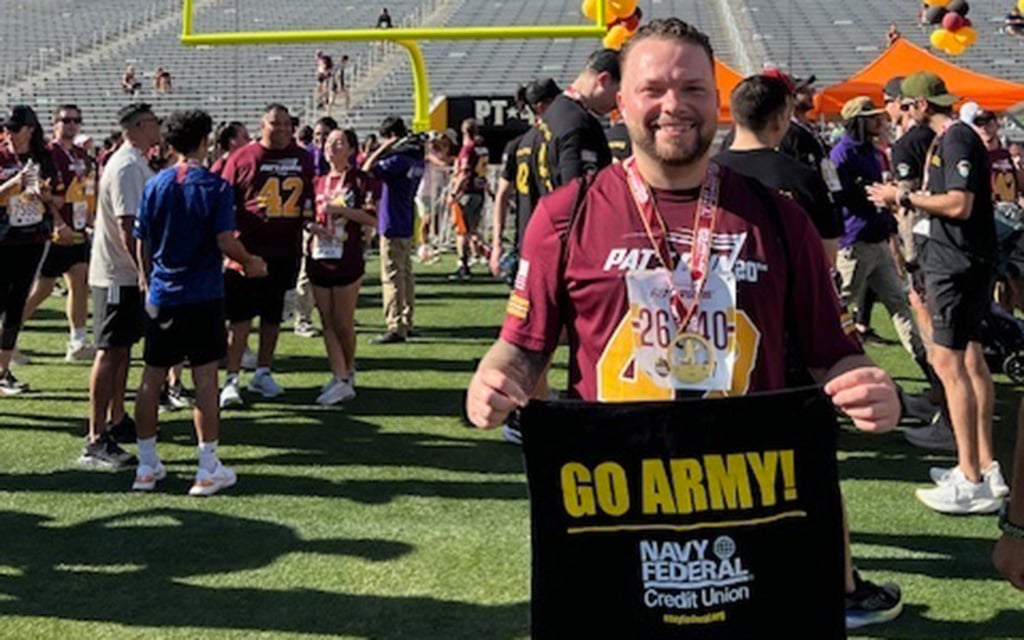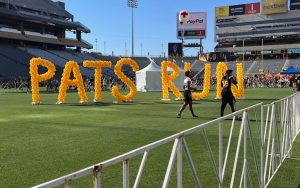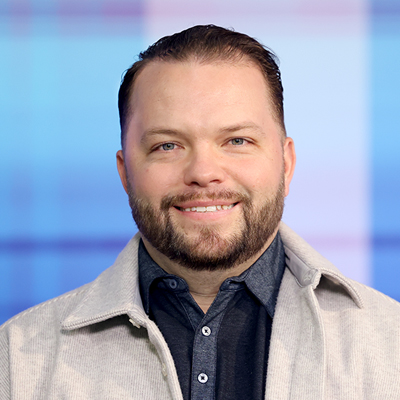
Pat’s Run commemorates Tillman’s sacrifice and service, reminding participants of his courage and selflessness. (Photo courtesty of Josh Amick/Cronkite News)
TEMPE – Exiting a dark tunnel last Saturday, the Mountain America Stadium opened to the Arizona sunshine reflecting off the white-painted yard markers on the field.
The 20th Pat’s Run, a 4.2-mile race, came to a climatic end at the 42-yard line, the number Pat Tillman wore with the Arizona State Sun Devils. As a first-time participant, I was showered with cheers by spectators before being greeted by former and current ASU football players at the finish line.
For the first time since high school, I felt like an athlete again, which significantly enough was 20 years ago, but more notably the same year of Tillman’s passing.
Tillman lost his life in action in Afghanistan, after his Army Ranger battalion came under attack and he was killed by friendly fire on April 22, 2004.
In June 2004, I was an 18-year-old kid fresh off high school graduation unsure of what to do with my life. Should I go to college, join the military or just get a job and move out of my mom’s house?
I decided to join the Army. I remember watching Tillman take the football field, helmet in hand, his glorious hair flapping in the wind. As a fan of the San Francisco 49ers, I was enamored with him as he played for the Cardinals, an NFC West-rival team, while showing such intensity on the football field.
When I found out about his death, it pissed me off. I felt that if a professional football player would leave the game behind to fight for his country, why shouldn’t I? So my decision was made, I was joining the Army.

Runners draw strength from Pat Tillman’s example, pushing through adversity with every step at Pat’s Run. (Photo by Josh Amick/Cronkite News
Then I was met with a harsh denial from my mother. With the “War on Terrisiom” reaching its height in 2004, and despite being old enough to make my own decisions, I loved my mother too much to disobey her.
So I enrolled at Central Washington University. That lasted two weeks – I dropped out before I ever appeared in my first class.
I went from job to job for seven years, with no real plans of ever going back to college. I was working as a server at an Italian restaurant, where I met a young woman who was training to enlist in the Army.
I picked her brain for a few weeks about the training, benefits, available jobs and how to enlist. My spark had been reignited at 25. I went to the Army recruiting station, trained for a few weeks, passed all my tests and enlisted in the Army before I ever told my family. Forgive me, mother.
Within a month of signing my contract, I was sent to Fort Jackson, South Carolina, to begin my 10-week-long basic training. After completing my training, I was sent to Fort Sam Houston in Texas for AIT school, where I would be trained as a combat medic.
I always wanted to be on the frontlines, but 25-year-old me was less enthusiastic about war than 18-year-old me.
My time in the service didn’t last long – barely two years – but the impact it had on my life is astronomical. In that short time, I learned discipline, respect, comradery, the significance of having a plan and adapting quickly when things go south and the importance of making your bed every morning, all habits and traits that I practice today.
When I was honorably discharged from the Army in 2013, I resorted back to my old ways, going from job to job before moving to Los Angeles with my younger sister.
I worked at a high-end steakhouse in the middle of downtown L.A., where I often brushed shoulders with some sports juggernauts including Tracey McGrady, Chauncey Billups, Jalen Rose, John Lynch, Ernie Johnson and Steve Levy.
It wasn’t until a friendly conversation with David Jacoby, who co-hosted the Jalen and Jacoby show on ESPN with Rose, that led me to where I am today. Jacoby suggested that if I wanted to cover sports as a journalist, I either would have to be a former player, someone with massive connections or have a degree in journalism or communications.
So I enrolled in classes in Long Beach Community College and once again had to leave before I ever took my first class. This time it wasn’t for lack of effort but due to unforeseen circumstances that forced me to move out of LA, back to Washington, back to mom.
I was defeated.
I ended up working at Boeing in 2019, and although it wasn’t my dream job, at least I had a job with good pay and benefits. Then COVID-19 halted the world in March 2020.

Pat’s Run brings together individuals from all walks of life, united by a shared commitment to honor and remember. (Photo by Josh Amick/Cronkite News)
Within six months of the first case hitting Washington, I was one of the thousands of workers at Boeing who were laid off. Stuck inside my mother’s house with no way of knowing when the lockdown would end or jobs would reopen, I re-enrolled at Everett Community College. It wasn’t until 2021 that I stepped foot inside a college classroom for the first time, 17 years removed from Central Washington University.
I wrote for the school’s newspaper, often covering baseball as it was the first sport returning to action, and for the first time since joining the service, I felt purpose in my life again.
After two years at Everett, I transferred to the Walter Cronkite School of Journalism at Arizona State University to pursue a sports journalism degree. But moving across states to a university as a 36-year-old student had its challenges.
Insert the Pat Tillman’s Veteran Center.
As someone who could not afford college, I needed to use my Montgomery GI Bill from the Army to help cover the costs. Every time I called the veteran center, someone picked up, gave me answers and helped me feel at ease about the transition across states.
From the moment I was accepted at ASU to the moment I attended the veterans’ portion of student orientation in August 2022, I knew that I had chosen the right school.
As I crossed that finish line Saturday morning, my sense of fulfillment had less to do with the comradery of the race and the flashbacks of being back in my Army fatigues, struggling with my brother beside me and somehow smiling through it all, and more to do with the celebration of Tillman’s life and how our timelines were reunited again.
I don’t use the term hero loosely. Most of the heroes in my life share my last name or my mother’s maiden name, but Pat Tillman is one of my heroes.
So 20 years later, I am set to walk across that stage at ASU, the same school my hero attended, finally as a college graduate, 20 years after I felt so compelled by a man who sacrificed it all and I was willing to do the same.
That’s what Pat’s Run meant to me. That’s what Pat Tillman means to me.
Thank you, Pat.

